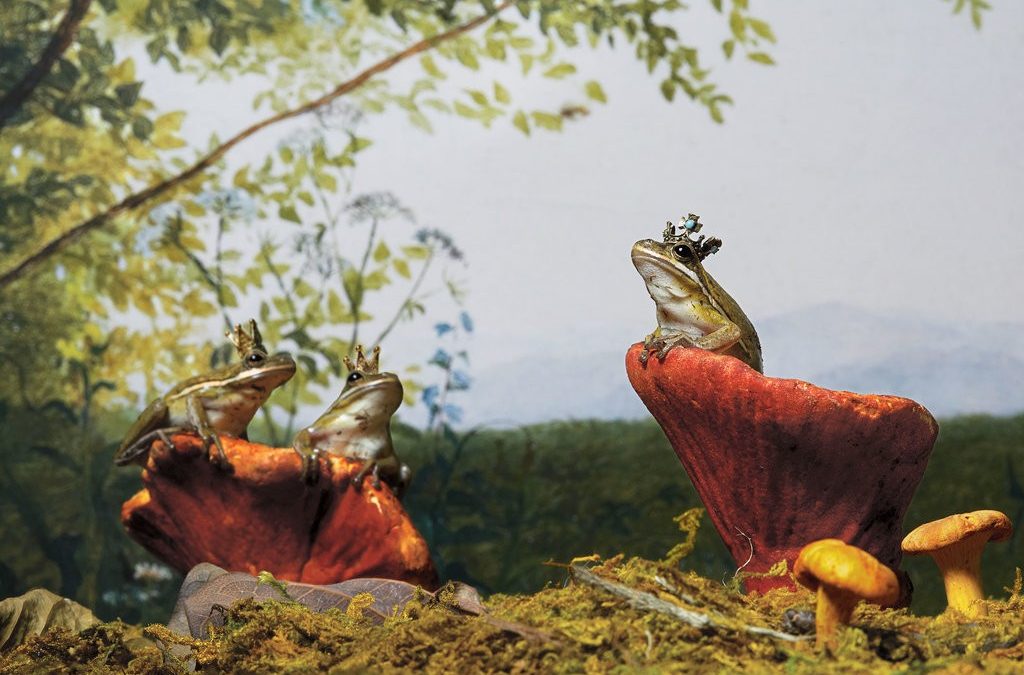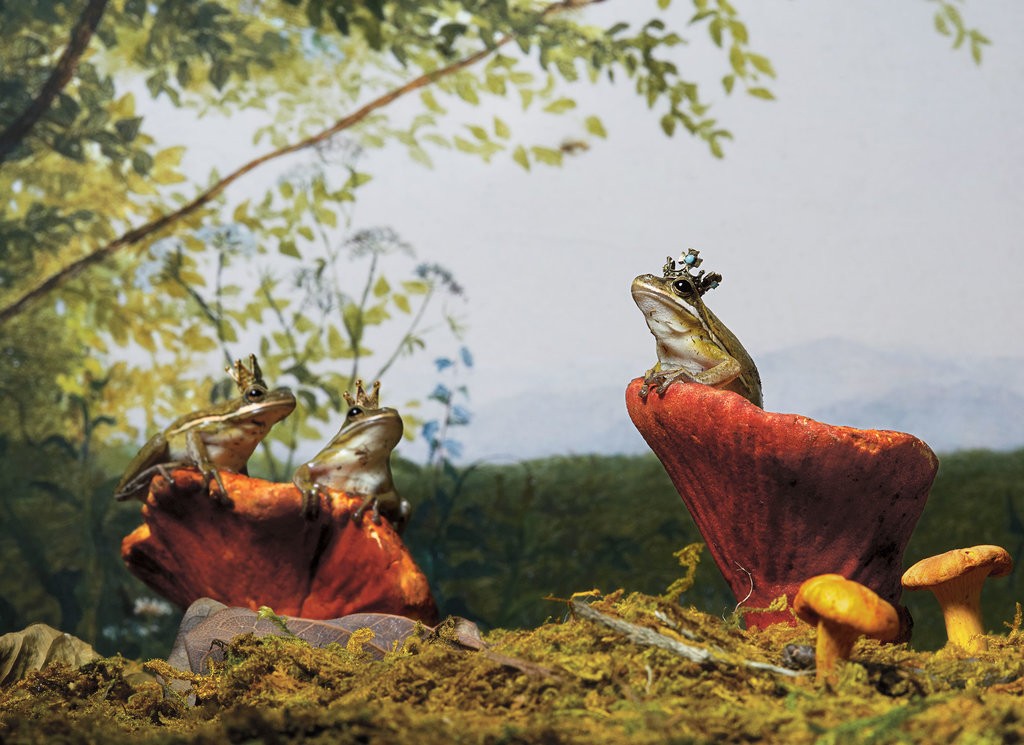Banded bullfrogs, native to Southeast Asia (and not yet endangered), on their thrones of chanterelle, lobster and shiitake mushrooms.
For ages, they have been symbols in human culture — of fertility, gastronomy and now the alt-right movement. But these noble amphibians are declining in numbers.
The headline is, at once, depressing, serving as one of the many coals on the simmering fire that will burn together to end our planet. It’s a good read anyway. Colorful, and uncommonly deep, on the subjects of conservation, respect for living things, and endangerment. All too familiar, and, like most outcomes of the past, likely to get worse.
By Ligaya Mishan, Via NYTimes
THE DUSKY GOPHER FROG, once endemic to the longleaf pine savannas of Mississippi, Alabama and Louisiana — and now listed among the 100 most endangered species on earth — is tiny, dark and warty. The creature is often described as both secretive and shockingly loud, with a rumbling, back-of-the-throat mating call that is uncannily close to the human snore. It hides from the sun almost its whole life, finding shelter in burned-out tree stumps. And although it’s armed against danger (its glands secrete poison), in the presence of a predator, the three-inch-long frog lifts its front legs to cover its eyes, like a child pretending to be invisible: You can’t see it if it can’t see you.
As of 2015, around 135 dusky gopher frogs were estimated to remain in the wild, mostly at a single pond in Mississippi, their breeding sites fragmented by new roads and the timber industry. The fate of the species may lie in the hands of the Supreme Court, which, as it begins a new term in October, will consider as its first case Weyerhaeuser Co. v. United States Fish and Wildlife Service. The lawsuit concerns the government’s designation of privately owned land in Louisiana as a critical habitat for the endangered frogs, setting property rights (and a potential $34 million loss in development value for the $27 billion Weyerhaeuser Company) against environmental conservation.
One study estimates that since the 1970s, around 200 frog species have disappeared, with a projected loss of hundreds more in the next century. Frogs are under threat on nearly every continent: from the French Pyrenees to the Central American rain forests to the Sierra Nevada in California. Some species, like the dusky gopher frog, have been depleted by human encroachment on their habitats. But the decimation that started 50 years ago was largely the work of the chytrid fungus Batrachochytrium dendrobatidis, which thickens a frog’s skin, hindering the animal’s ability to absorb water and oxygen and to maintain a balanced flow of electrolytes, leading to heart failure. Once infected, entire populations can collapse in a single season.
No one knows exactly how the disease spread, but it was likely carried unwittingly by humans from one country to the next, or by the female African clawed frogs that were shipped around the world for laboratory experiments and, until the early 1970s, hospital pregnancy tests. (In the test, a frog was injected with a woman’s urine, which, if she was pregnant, would contain an ovary-stimulating hormone that caused the frog to lay eggs.) Live frogs, potential carriers of the disease, continue to be moved across borders into nonnative habitats; in the first decade of the 21st century, the United States imported nearly 48 million pounds of them, some destined to become exotic pets, others winding up on dining tables.
More than three billion frogs are eaten worldwide each year, some 4,000 tons by the French and half that by Americans, who tend to prefer them patted with flour and sautéed in browned butter. These are mostly farmed frogs and thus not as vulnerable to extinction, but the circumstances in which they’re bred and exported may contribute to the spread of disease. And while in some parts of Asia the whole frog — minus the skin, which contains toxins — is submitted to the pot and boiled for soup, in many cases only the hind legs are used for food, meaning the bulk of the body goes into the garbage.
According to one study, around 200 frog species have disappeared since the 1970s.

Photographs by Kyoko Hamada. Styled by Victoria Petro-Conroy.
It’s an ignoble end for an animal that, despite its diminutive size, has held an exalted role over the ages in almost every culture. Frogs have been revered as emissaries of the divine (because of their regenerative powers) and feared as witches’ familiars, noxious and baleful. They have also been beloved as our stand-ins, infiltrating the stories we tell about ourselves, appearing as tricksters and fools, pompous kings and yearning commoners. Their value isn’t merely symbolic: Their croaks were the music in hundreds of early Japanese verses, until the 17th-century Japanese poet Matsuo Basho gave them physical presence — and comic power — in the famous 1686 haiku: “Old pond / Frog jumps in / Water-sound.” Their omnipresence in our fables speaks to their centrality in sustaining the world around us. In science class, they are our introduction to biology, dissected to reveal life’s inner mysteries. Toxins in their skin may yield new antibiotics and painkillers.
More fundamentally, frogs are linchpins in the ecosystem, both predator and prey. And they are our watchmen, keeping vigil over our ponds, marshes, lakes and streams, our meadows and our woods, the quality of our water and our air. “If they go silent, there could be bad stuff happening,” says Christopher J. Raxworthy, a herpetologist at the American Museum of Natural History in New York. Like honeybees, whose colonies began to collapse en masse across the United States a decade ago, frogs are portents of the greater ills that could befall our environment — and us.


